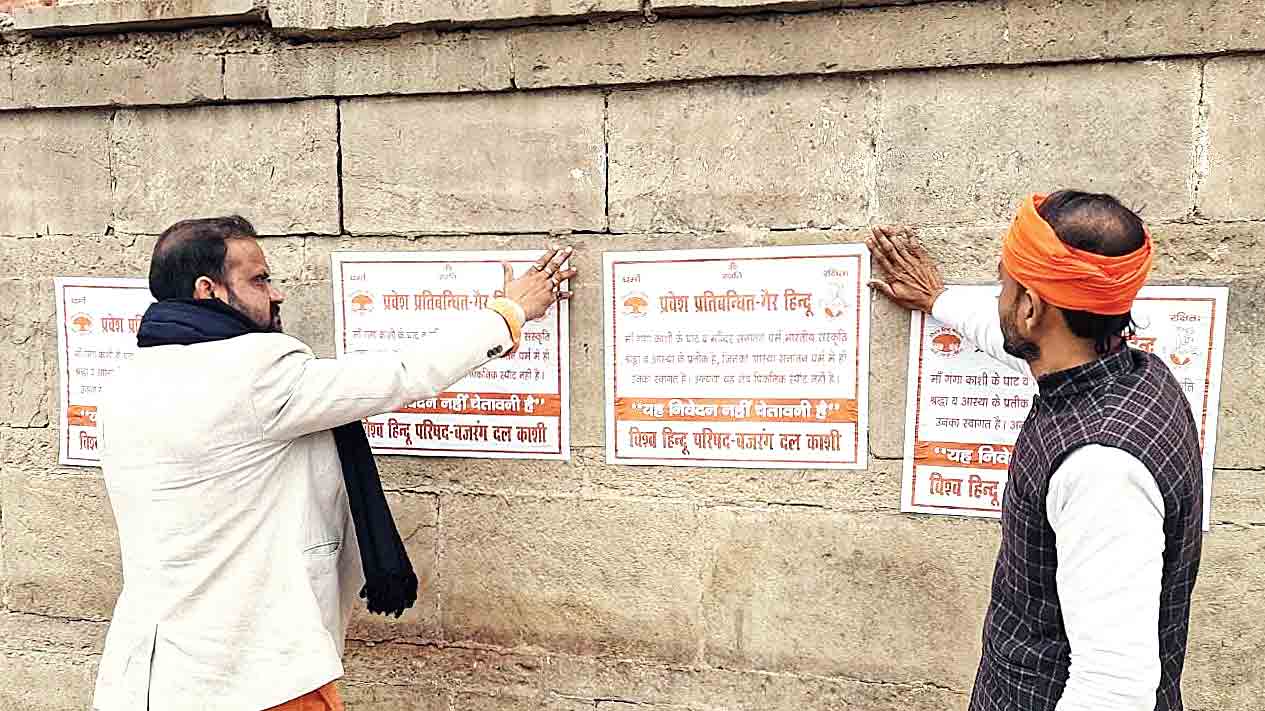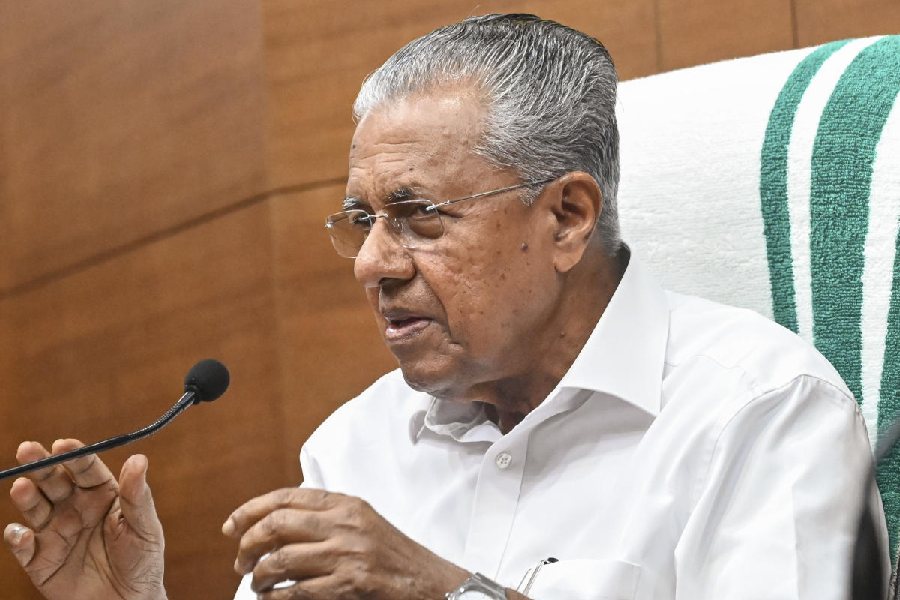Several residents of Varanasi believe that posters that prohibited the entry of “non-Hindus” were put up along the Ganga’s ghats here in the past two days as part of a project to use the temple town and its sacred river and temples to polarise voters across Uttar Pradesh ahead of the upcoming Assembly polls.
The posters are emblazoned with “Entry prohibited — non-Hindus” on the top.
The lines below said: “The ghats and the temples along Mother Ganga are symbols of Sanatan Dharma. Those who believe in Sanatan Dharma are welcome. Otherwise, this is not a picnic spot.”
News agency PTI has quoted officers in Varanasi as saying that Bhelupur police station is investigating the matter, the posters are being removed, and those involved are “being identified”. No arrests had been made till Sunday evening.
Those who put up the posters did not conceal their identity, though. The names of the Vishwa Hindu Parishad and the Bajrang Dal are inscribed on the posters. Local people say they saw VHP and Bajrang Dal volunteers stick the posters on walls along the ghats.
The posters have filled with foreboding Krishnanand Tripathi, a 60-year-old professional and a devout man who regularly visits the Kashi Vishwanath temple and whose son and daughter study at Banaras Hindu University.
“Ever since Prime Minister Narendra Modi was elected MP from Varanasi in 2014, VHP and Bajrang Dal volunteers have been calling the shots at the ghats and the temples near them,” Tripathi said.
“They hold sway even over the priests at the (Kashi Vishwanath) temple. The (temple) administration too takes in RSS volunteers as if they are part of the routine at the shrine.”
Modi himself had used the temple precincts on December 13 to practically launch his party’s election campaign, making what might be deemed polarising references to Aurangzeb and other historical figures.
The Prime Minister — who was speaking after inaugurating a renovated and expanded Kashi Vishwanath Dham —punctuated his speech with chants of “Har Har Mahadev”.
Donning the ceremonial attire of a Hindu priest, Modi had taken a dip in the Ganga and, sandalwood paste smeared on his forehead and escorted by saffron-clad damru players, carried out puja in the sanctum sanctorum.
In his speech, he ignored Varanasi’s age-old syncretic culture and emphasised its Hindu character, symbolised by the Vishwanath temple and the Sangh parivar narrative about Aurangzeb ordering its part demolition to build the Gyanvapi mosque on the premises.
Many residents told The Telegraph that they felt that the RSS, VHP and Bajrang Dal activists derived their confidence from the manner in which the Prime Minister acted.
Research by scholars Audrey Truschke, Richard M. Eaton, M. Athar Ali and Satish Chandra has shown that Aurangzeb’s army did carry out an operation on the Kashi Vishwanath temple in 1669 but it was aimed against “subversive” activities.
These historians are unanimous that the temple priests had “conspired” to help Maratha king Shivaji escape Aurangzeb's captivity. It would have been impossible for the Mughal emperor to overlook elements within his territory facilitating the escape.
Historians say that Rajputs made up 75 per cent of the troops that carried out the 1669 operation on the Kashi Vishwanath temple, and that nearly a third of the nobles at Aurangzeb’s court were Hindu.
Less than two per cent of the members of Modi’s ministry are Muslim despite the community making up 14 per cent of the population.
Jayapur, the village in Varanasi that Modi “adopted” under the Sansad Adarsh Gram Yojana after being elected to Parliament in 2014, does not have a single Muslim family — a rarity in a constituency where Muslims make up 28 per cent of the population.
For all the Hindu symbolism of Modi’s December 13 event and all the hatred spewed by the recent posters, the contribution to Varanasi's culture and economy made by this 28 per cent is significant.
The famous Banarasi silk saris that are a staple of weddings across India, and are offered to deities at the various city temples, are mostly the handiwork of Muslim weavers and zari workers.
Muslims of the city have contributed heavily to the Varanasi gharana of Hindustani classical music and the Kathak dance form. Bismillah Khan grew up playing the shehnai at the Kashi Vishwanath temple. Saint-poet Kabir lived and composed most of his poems in this city.
To many here, the voice of Varanasi is reflected not in the latest posters along the ghats but in the verses of Kabir, one of which asks: “Jo tum Babhan Babhni jaya; Aani dwar kah-e nahin aaya/ Jo tum Turuk-Turkni jaya; Bhitar-e khatna kah-e na karaya?
(If you call yourself a Brahmin, why did you come from the same path/ If you call yourself a Turk-Muslim, why were you not circumcised in your mother’s womb?)”












